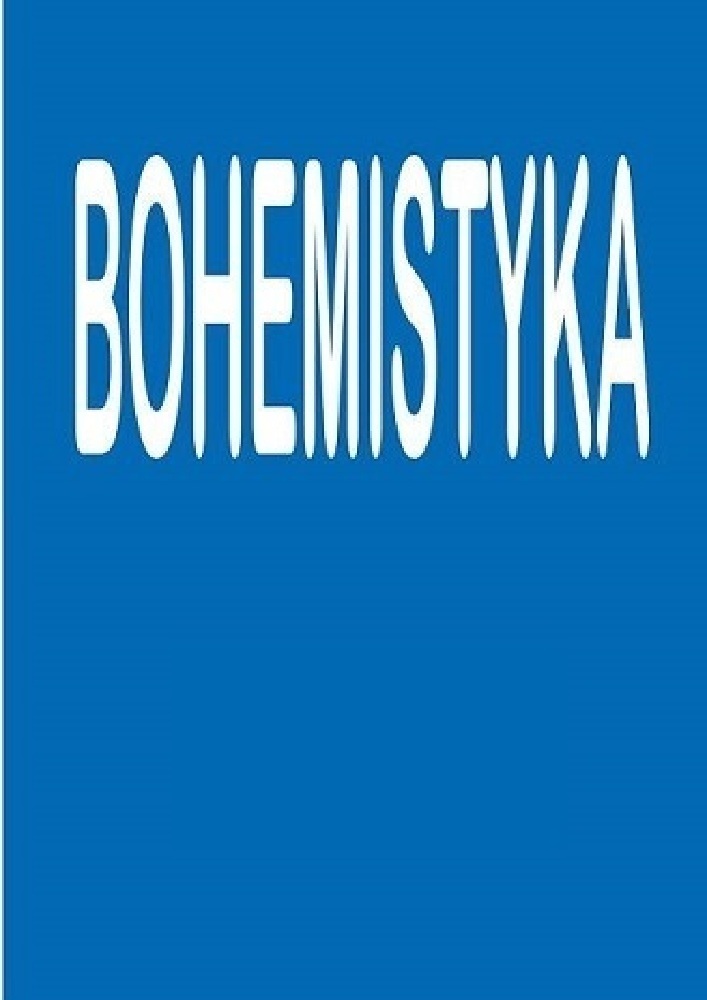Abstract
The paper focuses on the analysis of a sample of military language from the stylometric perspective. The corpus is the chronicle of the 8th Czech Armed Forces Guard Company, which operated at the Bagram Air Field base (BAF). We work on the assumptions that in the corpus, there will be (A) a prominent presence of military slang; (B) a high proportion of abbreviations; (C) frequent linguistic devices expressing mutuality and collectiveness of the soldiers’ enterprise. The texts were subjected to keyword and collocation analyses; these determined several stylistic features of theirs (such as use of English-based expressions, protocol-like language, or idiosyncratic collocations), which testify to the multifaceted character of the military chronicle genre.
References
Brezina Vaclav, McEnery Tony, Wattam Stephen. (2015). Collocations in context: A new perspective on collocation networks. International Journal of Corpus Linguistics, 20(2), pp. 139–173.
Cvrček Václav. Asociační (kolokační) míry [Association (Collocation) Measures]. Available at: https://wiki.korpus.cz/doku.php/pojmy:asociacni_miry [quoted 20-07-21].
Čech Radek, Kubát Miroslav. (2016). Text length and the thematic concentration of text. Mathematical Linguistics, 2, pp. 5–13.
Disler Edith. (2008). Language and Gender in the Military: Honorifics, Narrative, and Ideology in Air Force Talk. New York: Cambria Press.
Footitt Harry, Kelly Michael. (2012). Languages and the Military (Palgrave Studies in Languages at War). New York: Palgrave Macmillan.
Chaloupský Ladislav. (2005). A sociolinguistic interpretation of military slang and vernacular expressions. Dissertation. Brno: Masarykova univerzita.
Kelly Michael, Baker Catherine. (2013). Interpreting the peace: peace operations, conflict and language in Bosnia-Herzegovina. New York:Brezina Vaclav, McEnery Tony, Wattam Stephen. (2015). Collocations in context: A new perspective on collocation networks. International Journal of Corpus Linguistics, 20(2), pp. 139–173.
Cvrček Václav. Asociační (kolokační) míry [Association (Collocation) Measures]. Available at: https://wiki.korpus.cz/doku.php/pojmy:asociacni_miry [quoted 20-07-21].
Čech Radek, Kubát Miroslav. (2016). Text length and the thematic concentration of text. Mathematical Linguistics, 2, pp. 5–13.
Disler Edith. (2008). Language and Gender in the Military: Honorifics, Narrative, and Ideology in Air Force Talk. New York: Cambria Press.
Footitt Harry, Kelly Michael. (2012). Languages and the Military (Palgrave Studies in Languages at War). New York: Palgrave Macmillan.
Chaloupský Ladislav. (2005). A sociolinguistic interpretation of military slang and vernacular expressions. Dissertation. Brno: Masarykova univerzita.
Kelly Michael, Baker Catherine. (2013). Interpreting the peace: peace operations, conflict and language in Bosnia-Herzegovina. New York:Brezina Vaclav, McEnery Tony, Wattam Stephen. (2015). Collocations in context: A new perspective on collocation networks. International Journal of Corpus Linguistics, 20(2), pp. 139–173.
Cvrček Václav. Asociační (kolokační) míry [Association (Collocation) Measures]. Available at: https://wiki.korpus.cz/doku.php/pojmy:asociacni_miry[quoted 20-07-21].
Čech Radek, Kubát Miroslav. (2016). Text length and the thematic concentration of text. Mathematical Linguistics, 2, pp. 5–13.
Disler Edith. (2008). Language and Gender in the Military: Honorifics, Narrative, and Ideology in Air Force Talk. New York: Cambria Press.
Footitt Harry, Kelly Michael. (2012). Languages and the Military (Palgrave Studies in Languages at War). New York: Palgrave Macmillan.
Chaloupský Ladislav. (2005). A sociolinguistic interpretation of military slang and vernacular expressions. Dissertation. Brno: Masarykova univerzita.
Kelly Michael, Baker Catherine. (2013). Interpreting the peace: peace operations, conflict and language in Bosnia-Herzegovina. New York: Palgrave Macmillan.
Křen Michal, Cvrček Václav, Čapka Tomáš, Čermáková Anna, Hnátková Milena, Chlumská Lucie, Jelínek Tomáš, Kováříková Dominika, Petkevič Vladimír, Procházka Pavel, Skoumalová Hana, Škrabal Michal, Truneček Petr, Vondřička Pavel, Zasina Adrian. (2016). SYN2015: Representative Corpus of Contemporary Written Czech, [in:] Proceedings of the Tenth International Conference on Language Resources and Evaluation (LREC’16), pp. 2522–2528. Portorož: ELRA.
Kubát Miroslav, Matlach Vladimír, Čech Radek. (2014). QUITA. Quantitative Index Text Analyzer. Lüdenscheid: RAM-Verlag.
KWords. The Czech National Corpus, 2015. Available at: https://kwords.korpus.cz [quoted 20-07-21].
Mádrová Jarmila. (2020). Lexikum účastníků mezinárodních zahraničních opera- cí a pozorovatelských misí (terénní výzkum) [The Lexicon of Participants in International Foreign Operations and Observation Missions (Field Research)]. MA thesis. Ostrava: Ostravská univerzita.
Místecký Michal. (2019). Využití rankové frekvenční distribuce při výzkumu antroponym v literárních dílech [Using the Rank-Frequency Distribution in Analysing Proper Names in Fiction]. Linguistica Brunensia, 67(1), pp. 27–38.
Olagunju Tosin. (2014). Language interactions between soldiers and corps members on NYSC camp. Saarbrücken: Scholar’s Press.
Popescu Ioan-Iovitz. (2007). The ranking by the weight of highly frequent words, [in:] Grzybek, Peter, Köhler, Reinhard (eds.). Exact Methods in the Study of Language and Text. Berlin / New York: Mouton de Gruyter, pp. 555–565.
Radková Lucie. (2018). Ráfek a cépézetka. Proč ne informátor a cela předběžného zadržení? Funkce policejní mluvy z pohledu jejích uživatelů [Ráfek (‘nark’) and cépézetka (‘clink’). Why Not informátor (‘informer’) and cela předběž- ného zadržení (‘police cell’)? The Function of Police Language from the Perspective of Its Users]. Naše řeč, 101(1), pp. 17–27.
Radková Lucie, Mádrová Jarmila. Militärische Missionen in Kriegsgebieten: Funktionen milieuspezifischer Wortschätze. Die Welt der Slaven. Currently in the review process.
Štrobl Daniel. (2018). Psychologické aspekty zabití [Psychological Aspects of the Act of Killing]. Praha: Triton.
Taylor E. Kelly. (2010). America‘s Army and the language of grunts: understanding the army lingo legacy. Bloomington: AuthorHouse.
Tuzzi Arjuna, Popescu Ioan-Iovitz, Altmann Gabriel. (2010). Quantitative Analysis of Italian Texts. Lüdenscheid: RAM-Verlag.
License
Copyright (c) 2021 Lucie Radková, Michal Místecký

This work is licensed under a Creative Commons Attribution-NonCommercial-NoDerivatives 4.0 International License.




